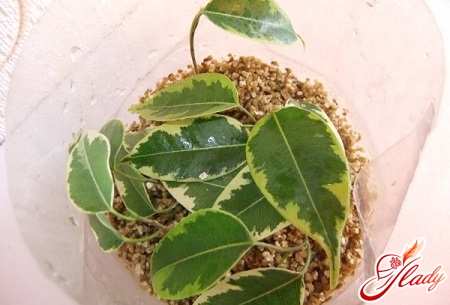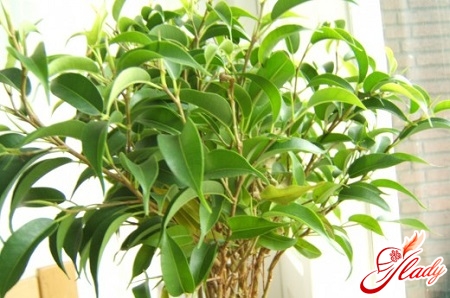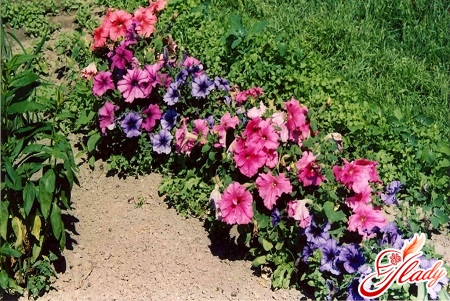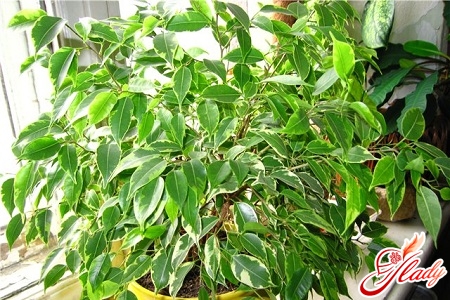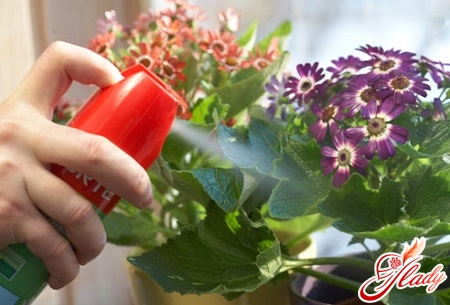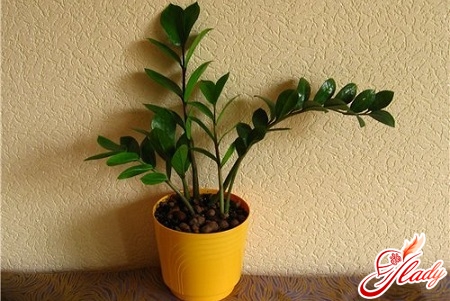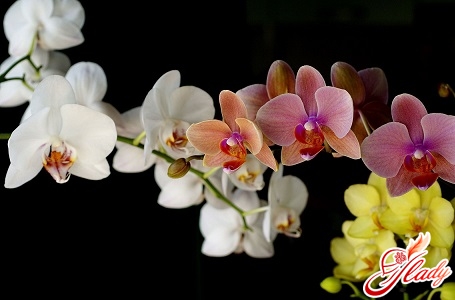 Once a beautiful Venus, indulging in lovejoy, dropped the shoe, which immediately turned into a delightful flower. This flower was called an orchid, since then it is considered a symbol of love and sexuality. Orchids have always been attributed to magical properties: a love potion was made from her petals and seeds. And the woman who raised this flower, secretly received recognition of all the men around her. And even today all lovers of house plants dream of having at least one orchid in their collection. After all, with its beauty, no flower is incomparable. And those who tried to grow this plant at home, they know - an orchid requires a treacherous attitude, constant care and close attention. In addition, this flower is prone to various diseases, and in order to cure it, it takes a lot of effort and patience. In this article, we will describe what orchid diseases are most dangerous, and try to describe effective methods for their treatment.
Once a beautiful Venus, indulging in lovejoy, dropped the shoe, which immediately turned into a delightful flower. This flower was called an orchid, since then it is considered a symbol of love and sexuality. Orchids have always been attributed to magical properties: a love potion was made from her petals and seeds. And the woman who raised this flower, secretly received recognition of all the men around her. And even today all lovers of house plants dream of having at least one orchid in their collection. After all, with its beauty, no flower is incomparable. And those who tried to grow this plant at home, they know - an orchid requires a treacherous attitude, constant care and close attention. In addition, this flower is prone to various diseases, and in order to cure it, it takes a lot of effort and patience. In this article, we will describe what orchid diseases are most dangerous, and try to describe effective methods for their treatment.
Yellow leaves - what to do?
Yellowing of leaves is itselfa common problem in orchids. And first, let's look at the causes of this trouble. Yellowing of the leaf is due to insufficient nutrition. That is, to him practically do not receive the necessary substances for normal growth. There are several reasons for this. First, it can be a natural process - some types of orchids dump old leaves in the dry season. Secondly, the cause of the disease can be fungal infections, which in turn arise because of an excess of moisture. Very often we buy an already infected plant and wonder why it disappears with time. After all, the orchid looked quite healthy in the store. The answer is simple: it means - it was not properly taken care of and too much watered. At the first signs of infection, it is necessary to immediately start treatment. The sooner you do this, the faster the plant will get its original look. The main thing to remember is that the treatment will be needed not only for the leaves, but for the roots of the plant. It is from them that the whole flower becomes infected. If you just delete the missing piece of paper - this will not help. Over time, the plant will lose the second, third ... And it will be impossible to revive it. So, we begin to act. First of all, it is necessary to dry the flower well. All - and the roots, and the stem. This will slow the growth of infection. Remove the flower from the pot and leave it for a day in a dry place. Get an antifungal drug (fungicide) and process the orchid, following the instructions in the instructions. Once the roots are completely dry, place the flower in a new soil and try to closely monitor the moisture. Do not fill the plant! In order to avoid the above problem, follow some tips:
- Orchid loves well-lit places, so make sure that there is enough sunlight;
- Never put the plant in a pot. Otherwise there will be a stagnation of water, then diseases can not be avoided;
- Do not allow the pot of the orchid to stand in the water. After watering, check the pan and, if necessary, drain the water from it.
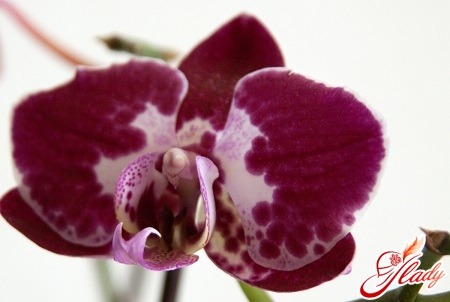
How to heal the roots of an orchid?
First, I want to give a little advice: When buying, always pay attention to the roots of the plant. It will not be difficult to do, because orchids are usually sold in transparent pots. If all the roots are dark brown, flabby in appearance - do not get a flower! Most likely, he is already infected - such roots can not be cured. The flower is doomed to destruction. Healthy roots - dense, have a greenish or silver hue. If you can not avoid root problems, do the following:
- Spread a piece of polyethylene or newspaper on the table;
- Carefully remove the flower from the pot. It is not difficult to do this: take it by the stem and start rocking, holding the pot with the other hand;
- After pulling out the plant, shake off the roots well from the ground;
- Find the infected areas: in these places the roots will be sluggish, when pressed from them, liquid may pour out;
- Carefully remove the missing roots by cutting them with scissors up to the living tissue;
- Treat the plant with an antifungal agent;
- Take a new pot, previously disinfected with soap and fresh soil (buy ready in the store);
- Pour a layer of soil on the bottom of the pot, place the roots of the plant on top;
- Holding the plant with one hand, the second fill the gaps between the horses' soil.
It should be remembered - an orchid does not like too muchfrequent transplants. Experts recommend that this procedure should be conducted no more than once in two years. If any problems with the health of the flower is not observed, you can transplant the plant and every three years. 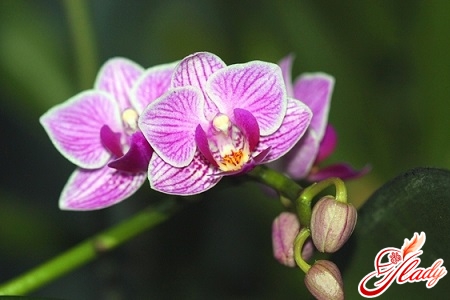
Pests: types, prevention, treatment
Diseases of orchids can occur not only because ofoverabundance of moisture and fungal infections. This plant is very fond of various pests that can live both in the ground and on the surface of the flower. Let's consider what pests are terrible for orchids.
- Falseworkers and scabbards
These insects attack orchids having denseleathery leaves: phalaenopsis, cattleya, bulbophyllums. If you notice brown dots on the leaves of a plant, or a growth, the size of a matchhead half - this is the females of these pests. Control measures are simple: clean the flower of the parasites and sprinkle with the phytophythm, diluting it according to the instructions. For prophylaxis, rinse the leaves of the plant with water once every 5-6 days;
- Chervets
This pest is like a miniature fluffya lump of white. And despite its innocent appearance, it is considered the most dangerous for orchids. The reasons for the appearance of the worm are different: it can fly into the window along with dust and wind, ants can spread it, and it can be transmitted from an already infected plant. Treatment: clean the leaves of the parasite and wipe them with a soft swab dipped in a liquid soap. It is also necessary to spray leaves and soil with phytoverm: twice with an interval a week;
- Whitefly
It would seem that the terrible can bringa small and harmless looking butterfly? In fact, this pest and its larvae suck the juice out of the plant. As a result, it begins to ache and shed leaves. It's easy to find: just shake the sheet and you'll see how the flock flies into the air. Treat as follows: rinse the plant with a solution made from laundry soap (a part of soap and 6 parts of water), spray the substrate with an athlete. Spraying is recommended to be repeated in a week;
- Thrips
They are like black wands with wings. When infecting these insects on the leaves and stems, dark dots and silvery film appear. In addition, thrips also affect the roots of the plant (they appear "constrictions"), and buds (black dots with tiny holes). Treatment is carried out by phytophythm or an athlete. Spraying is carried out three times with an interval of 10 days;
- Spider mite
This pest is a thunderstorm of many indoor plants. And the orchid is no exception. How to recognize: the leaves are white, a lot of small holes appear on them, as a result of which the leaf falls off. Buds, too, are prone to mite - they fall off, and not being dismissed. Also on the plant you can see a light, almost invisible spider web. The disease is treated with high humidity: the pot with the plant is placed in a pallet with water for several hours. Then it is necessary to spray with the same phytoverm;
- Centipedes
Live in the ground. And the purchased land can be contaminated by them. If the time is not taken, all the plants in the house will suffer from this parasite. To get rid of them, you need to get out of the substrate. To do this, the flower is placed in a drip tray and waiting for the pests to come out. They need to be caught and carried out from the room where the flowers are. After the procedure, it is desirable to transplant the plant into fresh soil, having previously checked it for parasites. Diseases and pests of orchids - this, of course, is unpleasant, but in many cases it is fixable. The main thing is to detect the disease in time and start treatment. We hope that our article will benefit you, and your collection of these wonderful plants will please the eye for a long time! We advise you to read:




